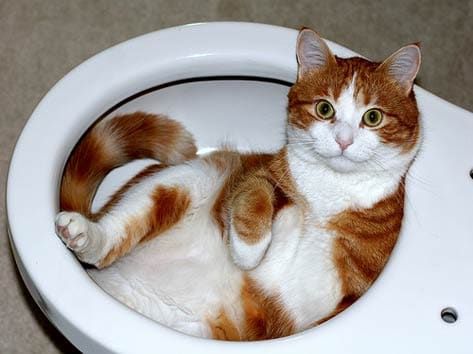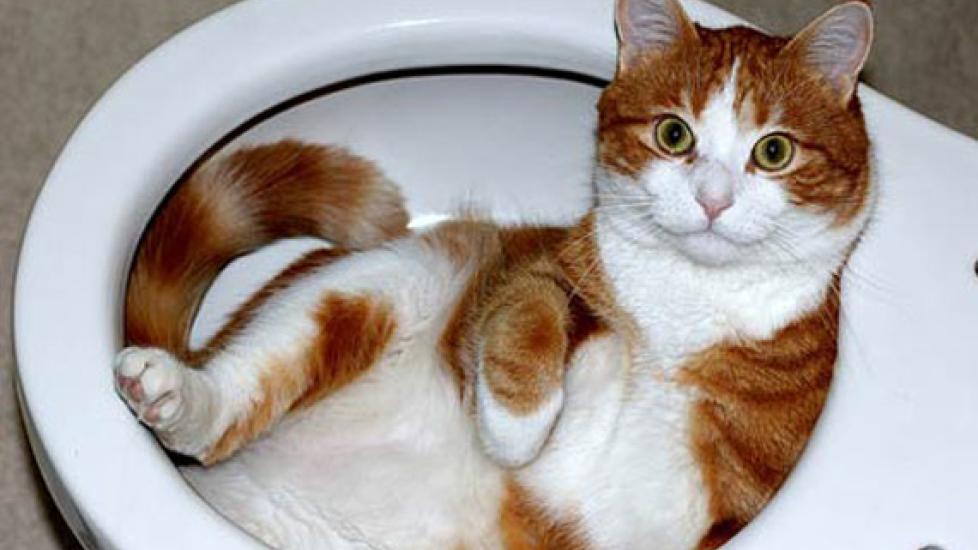Feline Urinary Issues: Treating Urinary Tract Infections
A couple of weeks ago, I left you hanging with regards to treatment options for three common causes of urinary problems in cats. Today, let’s tackle bladder infections.
Bacterial infections of the bladder are not all that common in cats, but the likelihood does increase as cats age. Diagnosing a bladder infection can be pretty straightforward. The bladder is supposed to be a sterile environment, so if a veterinarian takes a look at a urine sample that was taken directly from the bladder with a needle and syringe and sees bacteria, there you go, your cat has a bladder infection.
Unfortunately, reaching a diagnosis is not always this simple. Low numbers of bacteria can be hard to identify under the microscope, or if a urine sample was collected from the litter box or exam table, the presence of bacteria is meaningless. In these cases, a veterinarian may see evidence of inflammation (e.g., proteinaceous debris and red and white blood cells) and infer that infection is the cause, but this is not always the case. For example, Feline Idiopathic Cystitis (FIC) causes bladder inflammation and is actually much more common than urinary tract infections in cats.
Recommended Pet Products
- Nutramax Proviable Probiotics & Prebiotics Digestive Health Supplement for Dogs & Cats, 160 count$89.98Chewy Price
- Fera Pets USDA Organic Pumpkin Plus Fiber Support for Dogs & Cats, 90 servings$34.95Chewy Price
- All Four Paws Comfy Cone E-Collar for Dogs & Cats, Black, Small$20.24Chewy Price
- Virbac Epi-Otic Advanced Ear Cleaner for Dogs & Cats, 4-fl oz bottle$13.19Chewy Price
When a urinalysis alone does not lead to a definitive diagnosis, a urine culture becomes necessary. In this case, urine must be collected via sterile technique directly from the bladder. Some veterinarians perform urine cultures in their own clinic, but most send them to a laboratory where technicians plate out the urine and try to grow bacterial colonies. If growth occurs, then various antibiotics can be tested against the actual bacteria sampled from your cat’s urinary tract, providing invaluable information about which antibiotics should be most effective against the infection.
Appropriate treatment for a bladder infection should rapidly improve a cat’s symptoms (e.g., urinating outside the box, discomfort when urinating, frequent urination, and/or producing only small amounts of urine at a time). If your cat is not feeling better within just a day or two of starting the antibiotic, it is time to perform a urine culture if one was not run initially, to try a different class of antibiotic, or to reevaluate the initial diagnosis. Persistent or recurrent urinary tract infections are quite rare in cats unless an underlying medical problem like diabetes mellitus or antibiotic resistance is to blame.
Sometimes, cats with bladder infections also have struvite crystals in their urine and/or a urinary pH that is higher than normal. If your veterinarian sees struvite crystals under the microscope, he or she will recommend either a prescription cat food or a urinary acidifier to speed your cat’s recovery.
Without appropriate treatment, struvite and other types of urinary crystals may coalesce to form bladder stones. If your veterinarian has found crystals in your cat’s urine sample, he or she will probably want to take X-rays and/or perform an abdominal ultrasound to evaluate your cat for stones. Next week, we’ll talk about how bladder stones, or uroliths, as veterinarian like to call them, can be treated.
Next week: Is Surgery Necessary for Bladder Stones?

Dr. Jennifer Coates
Pic of the day: "I'm all right, Honest!" Feeling Content by Jim






